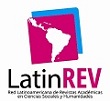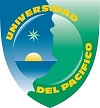Ecological trascendence of the tropical jungle with special reference to the neotropic
DOI:
https://doi.org/10.47366/sabia.v4n1a10Keywords:
Tropical ecosystems, Development models, Environmental services, Sustainability, ResearchAbstract
The tropical forest is the most complex ecological formation of the planet, it forms in itself the biome, macroecosystem or life form more characteristic of the tropic, reason for which this article, with a focus of integral social and ecosystemic evaluation of the tropical forest, It was proposed to teach in a pedagogical way, different concepts and conceptions of this ecological formation. In addition to the revision of documents of the last decades, the work synthesizes the concepts of the authors as a result of the study of the jungle zones of the country. The tropical forest is described as the richest and most complex biome that has produced the evolution of terrestrial life, being considered that it harbors between 40 and 50% of the living species, postulating the country as the richest in plant species, birds, amphibians , Insects and possibly microorganisms, examining these resources for their immense economic possibilities, emphasized the need for the forest and its remnants (forests, matorales, stubble, weeds) to be protected as true irradiators of alternatives for biological and microbiological control In agricultural systems, emphasizing the role of the rainforest in sustaining continental and marine aquatic life, and interpreting the jungle diversity as a large bank of germplasm of incalculable value, culminating in the immense possibilities of aesthetic, playful enjoyment, Educational, scientific, recreational and cultural and, paradoxically, obstacles, which For that social enjoyment, impose the economic and political backwardness of the social system. The exploitation without destruction of this formation is considered as one of the greatest technological challenges that man has faced throughout history.
References
Bates, M. 1965. South America, flora and fauna. Time, Inc. New York.
BOURLIERE, F. (1973) The comparative ecology of rain forest mammals in Africa and Tropical America: some introductory remarks. Tropical forest ecosystems in Africa and South America: a comparative review (eds.: Meggers, B.J., Ayensu, E.S. y Duckworth, W.D.), pp 279-292. Smithsonian Institution Press, Washington, D.C.
Gómez-Pompa, A., C. Vázquez-Yanes & S. Guevara. 1972. The Tropical Rain Forest: A Non Renewable Resource. Science 177: 762-765.
Juma, C. 1981. “Kenya: Population and Resources,” Ambio, Vol. 10. No. 4, Stockholm
Klinge, H., Rodrigues, W.A., Bruning, E. & Fittkau, E.J. 1975. Biomass and structure in a central Amazonian rain forest. In Tropical Ecological Systems (F.B. Golley & E. Medina, eds.) Springer, New York, p.115-122.
Mejia, M. 1981. El piedemonte putumayense, economía básica. Bogotá. Corporación Araracuara. (documento interno).
Molinier, Michel; Guyot, Jean Loup; De Oliveira, Eurides; Guimarães, Valdemar Santos And Chaves, Adriana. 1995. Hydrologie du bassin de l’Amazone. In Grands bassins fluviaux péri-atlantiques: Congo, Niger, Amazone, edited by J. Boulègue and J. C. Olivry. Paris (France). ORSTOM: p. 335-344.
Narvaez, A. 1980. Introducción al estudio de los ecosistemas neotropicales. Universidad de Nariño, pp. 57. Documento Interno.
Patiño, H., Y Quintero, H., 1982. Trascendencia ecológica de la selva tropical con referencia especial al neotropico. Parte 1. Revista Coagro 38: 27-32.
Patiño, H., Y Quintero, H., 1982. Trascendencia ecológica de la selva tropical con referencia especial al neotropico. Parte 2. Revista Coagro 38: 23-28.
PERRY. D., 1978. A Method of Access into the Crowns of Emergent and Canopy Trees. Biotropica Vol. 10, No. 2 (Jun., 1978), pp. 155-157
Perry. D., 1980. An arboreal naturalist explores the rain forest mysterious canopy. Smithsonian 2: 47-52.
Schultes, RE. 1959. The Amazonia as a source of new economic plants. Econ. Bot. 33:259- 266. With A. Hoffman. Plants of the Gods. New York: McGraw-Hill.
Shnell, H. 1970. Introduction a la phytogeographies des pays tropicaus. GAUTHIERS VILLARS. Editors; Paris. V.I: 445 pp.
Schultes, R.E. 1979. La Amazonía como fuente de nuevas plantas económicas. En: Seminario sobre los Recursos Naturales renovables y el desarrollo regional amazónico. Bogotá. IICA- IGAC. 1979. 201-212 PP.
Walter, H. 1964: Die Vegetation der Erde in ökophysiologischer Betrachtung. I. Die-tropischen und subtropischen Zonen. G. Fischer Verlag, Jena. 592 pág.
White, P. 1983. Nature’s dwindling Treasures Rain Forests. National Geographic. 163 (1): 2-49.
Downloads
Published
How to Cite
Issue
Section
License
Copyright (c) 2018 Sabia Magazine

This work is licensed under a Creative Commons Attribution-NonCommercial-ShareAlike 4.0 International License.
















